
Hakan Hakansson
(Lund: Lunds universitat, 2001)
373 pp.
There have been a number of recent and valuable studies of John Dee (1527-1609), but among the most important of these has to be Hakan Hakansson's Seeing the Word: John Dee and Renaissance Occultism. Hakansson focuses his study on the early modern concept of "natural" language, and in particular on Dee's search for a language that could yield up the secrets of both nature and God. Hakansson's book, in other words, is not only a study of John Dee and his works, but also offers an important contribution to understanding the nature of language in the Renaissance and early modern periods. Seeing the Word is organized into three primary sections: "Symbolic Exegesis, Language and History," "The Language of Symbols," and "The Language of Magic." Under these rubrics, Hakansson examines the life and work of Dee as well as related figures like Trithemius and Paracelsus, to name only the most prominent. It is self-evident that Hakansson knows his subjects well, and further, has a original and important thesis that links his observations and interpretations into a coherent and valuable argument about the nature of language, or the Word, in late Renaissance and early modern esotericism. I have read numerous recent books on John Dee and his period, and Hakansson's is the one to which I will most often return. This is a valuable book not only for those interested in John Dee, but also for anyone who wishes to develop a deeper understanding of the roles that language and theories of language play in Western esotericism. I strongly recommend purchase of this work, although because it originates in Sweden, it may take some searching to find a copy. But you will find that the book will be worth every bit of the hunting.
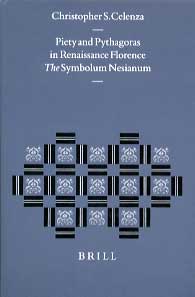
Christopher S. Celenza
(Leiden: Brill, 2001)
238 pp.
Piety and Pythagoras in Renaissance Florence: The Symbolum Nesianum, by Christopher Celenza, is a beautifully produced and extensively annotated introduction to and edition of the Symbolum Nesianum, a previously unavailable work by Giovanni Nesi, a follower first of Marsilio Ficino and then of Girolamo Savanarola. Celenza's introduction to this work and its context is very lucidly written and covers a substantially greater range than might be usual with an edition of a work like this one. Among its valuable contributions, for readers of Esoterica, is an extensive situating of Nesi and of Renaissance Florence in relation to Pythagoreanism and the various currents of Platonism and Neoplatonism -- that is to say, in relation to esoteric currents of antiquity and late antiquity. In addition to unveiling an important Renaissance work, Celenza's immense scholarship illuminates the hitherto less examined role that Pythagoras and Pythagoreanism played for the Renaissance Platonists. Piety and Pythagoras in Renaissance Florence represents a major contribution to the series Studies in the History of Christian Thought, and to our understanding of the Renaissance period.
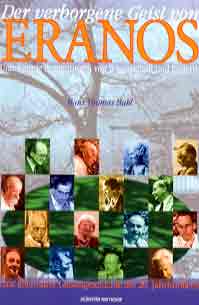
Der verborgene Geist von Eranos: Unbekannte Begegnungen von Wissenschaft und Esoterik
Hans Thomas Hakl
(Verlag: Scientia Nova, 2001)
468 pp.
Hans Thomas Hakl's Der verborgene Geist von Eranos: Unbekannte Begegnungen von Wiseenschaft und Esoterik is a monumental work that provides considerable insight not only into what is arguably the single most important gathering of scholars in the twentieth century, under the name Eranos, but also into the full range of successors and influences of that gathering (and, one is almost tempted to say, movement). As is well known, Eranos , founded by Olga Fröbe-Kapteyn, and including such extraordinary figures as Gershom Scholem, Carl Jung, Henry Corbin, Antoine Faivre, and many others, was a remarkably fruitful event that brought together many of the seminal minds in the humanities in the mid-twentieth century. I have often wondered what it would have been like to attend these meetings, and have long admired them from afar. In this book, Hakl offers us the opportunity to see into those exceptional gatherings, and with a masterful hand offers us an overview of what Eranos was really about, as well as of its manifold influences. This book is the best work available on the Eranos phenomenon, and yet it offers far more than that, for its sweep is vast and its author erudite indeed. Perhaps, for those who cannot read German, an English edition of this book will eventually appear, but for all who have German and any interest at all in Eranos and the remarkable people who attended it, as well as in what this gathering and its members really means -- indeed, for the history of the study of esotericism in the twentieth century, which is what this work is really about -- Hakl's book is indispensable. I strongly recommend its purchase both by individuals and by libraries.
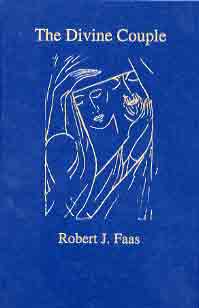
Robert J. Faas
(St. Paul, Minn.: Grailstone Press, 2001)
416 pp.
The Divine Couple: Selections from the Mystical-Alchemical Treatises of Jacob Boehme and Disciples, edited by Robert Faas, is a book that includes a vast array of previously difficult-to-obtain or unavailable works from the theosophic tradition of Boehme. Here for the first time in English are a number of works, including Nicholas Berdyaev's essay on "The Doctrine of Sophia," selections from Franz von Baader, William Law, Dionysius Freher, Christopher Walton, and, of course, Jacob Boehme. What makes this book particularly unusual, in addition to the rare treatises that it contains, is the argument that it presents about these works. At the heart of the book is the argument, of which its treatises represent the support and elaboration, that the theosophic tradition entails a "theosophic process" of spiritual awakening into a "body of light." This process of spiritual alchemy is accomplished either through an ascetic path like that of Johann Georg Gichtel (whose work is represented in this collection) or through a path of joint male-female alchemical work (like that alluded to by Walton in particular). The Divine Couple is a dense and substantial book full of theosophic-alchemical works that begin to reveal themselves only after careful study. Faas has obviously spent a great deal of time in precisely such study, and himself takes a place in the theosophic tradition that he has collected and introduced here. Along with Wisdom's Book: The Sophia Anthology, those who wish to study theosophy in depth have now available with this new book, The Divine Couple, enough for a lifetime's investigation.
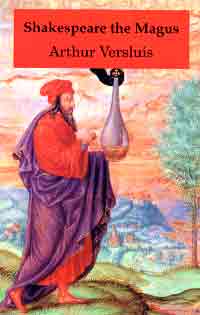
Shakespeare the Magus
Arthur Versluis
(St. Paul, Minn.: Grail Publishing, 2001)
155 pp.
Although a great many books have been written about Shakespeare, comparatively few of them have discussed Shakespeare's obvious and extensive references to esoteric themes and ideas. Thus, Shakespeare the Magus fills a significant gap in scholarship. The subjects of this book include astrology, herbalism, white magic, sorcery, fairies, ghosts, prophecies, dreams, and ceremonial magic, each with their own chapters, and each including copious references to virtually all of Shakespeare's plays, including those rarely if ever referred to. Shakespeare the Magus discusses "Shakespeare's work as it manifests a magical world-view. . . . modern readers of Shakespeare are often unaware of how deeply the plays are grounded in magic. . . . To understand the works of Shakespeare, one must understand the magical symbolism that infuses them." To explain this magical worldview in Shakespeare is the aim of this book, and given its modest size, it covers a considerable range of subjects and plays. This would be a useful book for anyone interested in the esoteric Shakespeare, as well as for those teaching a course on Shakespeare's dramas and searching for a book accessible to students.
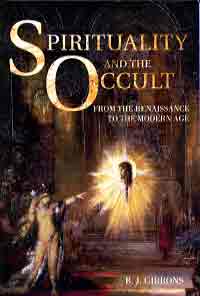
B.J. Gibbons
(London: Routledge, 2001)
196 pp.
Spirituality and the Occult: From the Renaissance to the Modern Age, by B.J. Gibbons, is a foray into the history of Western esotericism, a term that the author eschews in favor of "the occult." At first, Gibbons acknowledges that "the occult" is a nebulous term and that one would be better off being more specific and referring to particular esoteric currents, but soon enough the book is off into rather broad generalizations about, well, "the occult." Spirituality and the Occult is organized into thematic sections like "Nature and Occult Thought," "Science, Magic, and the Occult," "The Body in Occult Thought," and "The Mind in Occult Thought." This kind of thematic organization is an interesting approach but may be somewhat dense and even a bit bewildering for the neophyte, who could use a good historical overview before tucking into a work like this one. Gibbons knows his material; one wishes, though, for a bit less generalization about "the occult" or "occultists" and more historical organization. Still, this is a useful book for those seeking to be specialists in the study of esotericism, and, if used judiciously and with some caveats, might possibly be used for university level courses, but we still await a solid, historically grounded survey of esotericism.
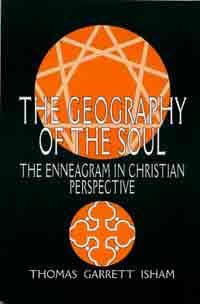
Thomas Garrett Isham
(Edmonds, Wash.: Holmes Publishing Group, 2000)
126 pp.
Ordinarily, we wouldn't include in these reviews a book on enneagrams, but Thomas Isham's book entitled The Geography of the Soul: The Enneagram in Christian Perspective, published by Holmes, is worth a mention. Isham incorporates the psychological system of the enneagram into a Christian spiritual perspective, drawing on authorities ranging from Origen and William Law to Miguel de Molinos. I am not particularly enamoured of the proliferating number of enneagrammatic or other more or less New Age systems of thought, but Isham does present some insights into personality types here and does place them in a larger Christian context, thus pointing toward possible intersections that may be emerging in contemporary society between Christianity and what is often seen as strictly New Age forms of thought.
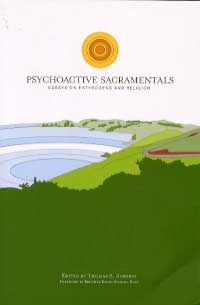
Psychoactive Sacramentals: Essays on Entheogens and Religion
Edited by Thomas B. Roberts
(San Francisco: Council on Spiritual Practices, 2001)
272 pp.
Psychoactive Sacramentals: Essays on Entheogens and Religion is a book edited by Thomas Roberts that includes articles by such well-known figures in the field as Huston Smith, Charles Tart, Stanislav Grof, and our own Dan Merkur. The use of entheogens, drugs that purportedly generate spiritual experiences in users, has been around for a great while, but only relatively recently has come in for organized scholarly scrutiny and research. This book, ably edited by Thomas Roberts, who also provides an overview of the field, is an important contribution to understanding what researchers are up to, as well as what dilemmas they face. Personally, I'm more inclined to traditional forms of practice, ones that do not involve laboratory work and pills, but it is quite striking to see such luminaries as Huston Smith, Tart, Grof, Merkur, and the others gathered together here making these arguments nonetheless.
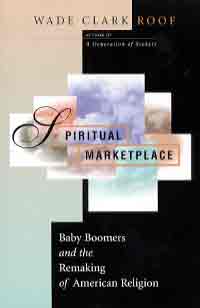
Wade Clark Roof
(Princeton: Princeton University Press, 1999)
367 pp.
In Spiritual Marketplace: Baby Boomers and the Remaking of American Religion, Wade Clark Roof, a sociologist at UC, Santa Barbara, draws on polling conducted under the auspices of a grant from the Lilly Endowment in order to form conclusions about contemporary American society as regards religious beliefs and practices. Central to his book's argument is the emergence of what he calls "metaphysicals," meaning those Americans who draw upon an eclectic range of spiritual resources from astrology to Asian religions to New Age channeling. The book is of some value in mapping changes in approaches to religion in American society over the past two decades, especially if read in tandem with a genuinely historically grounded survey like, say, Wouter Hanegraff's New Age Religion and Western Thought. Indeed, the study of Western esotericism (particularly in the forms in which its various currents appear in contemporary society) requires historical grounding like Hanegraaff's, else one may well see only a hodgepodge under the rubric of sociological categories.
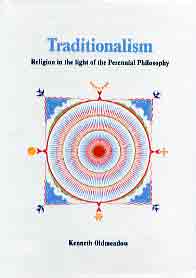
Traditionalism: Religion in the light of the Perennial Philosophy
Kenneth Oldmeadow
(Colombo: Sri Lanka Institute of Traditional Studies, 2000)
225 pp.
It is interesting to read these new works not least because the signature authority and certainty that characterizes the works of first generation authors is here somewhat muted. Upton acknowledges the precedence of first generation Traditionalists and writes with some humility that he does not intend to rival them, but rather to apply their approach to our own society and era. Upton's book The System of Antichrist argues vociferously against the various individuals and groups that go under the term "New Age," and a great many contemporary or recent authors and groups receive a good licking, among them Castenada, the Course in Miracles, and not least, UFO abduction phenomena, which Upton attributes to demons. Internecine war appears a bit here too, when Upton devotes a chapter to attacking Daniel Quinn's book The Only Tradition (in which Quinn attempts an unholy marriage of Traditionalism and Blavatskyism, thus provoking Upton's rather stern and in general probably deserved criticisms). Glass's book Yuga seems to have been put together at random or by lot, and I have to say I couldn't make heads or tails of it. There are some genuine insights in Upton's book, but I imagine that for some who see themselves as Traditionalists, only the first generation authors will do, and that the audience for these books will probably be limited, albeit including some new readers brought in by precisely what Upton intends: to apply Traditionalism in new ways.
Of these new contributions to the growing body of Traditionalist writings, undoubtedly the most useful, though, is Kenneth Oldmeadow's book entitled Traditionalism: Religion in the Light of the Perennial Philosophy. While it is true that this book is explicitly written from a Traditionalist viewpoint rather than solely being about Traditionalism, there is a fair bit of the latter in it as well. As an overview of Traditionalism and its various first generation authors and their ideas, Oldmeadow's is a valuable book, made more so because it also takes into account (or to task, as the case may be) other methodologies for the study of religion. Traditionalism is, of course, a controversial subject and, as I have written elsewhere, one that deserves a scholarly treatment that places it in historical context. Although Oldmeadow's Traditionalism arguably belongs more to primary Traditionalist literature than solely to the academic study of Traditionalism, it nonetheless also represents at the least a significant step in the direction of a full overview and fair assessment of one of the most provocative developments of religious universalism or perennialism in the twentieth century.
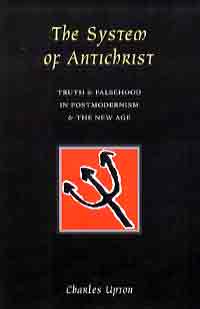
Charles Upton
(Ghent, N.Y.: Sophia Perennis, 2001)
562 pp.
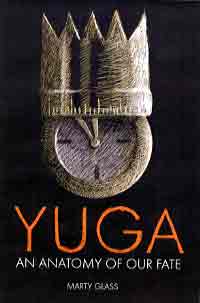
Marty Glass
(Ghent, N.Y.: Sophia Perennis, 2001)
348 pp.